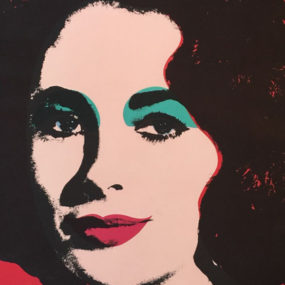Andy Warhol
Most famous for his brash critique of pop culture in the 1960s, Andy Warhol is an American artist whose works ranged from advertising to photography to film. Through bold use of color and simplistic, striking imagery, he popularized the genre of pop art and created an artistic movement that is still very much alive and present today.
Artwork
Born in Pittsburgh, Pennsylvania on August 6, 1928, Warhol suffered bouts of illness as a child, leading him to pursue drawing as a way to pass the time. He began to distinguish himself as an artist when he was a teenager, winning the prestigious Scholastic Art and Writing Award while in high school. Warhol pursued a Bachelor of Fine Arts degree at the Carnegie Institute of Technology, with an emphasis on commercial art and advertising.
Warhol sought to connect with his audience using familiar faces and everyday items such as Coca-Cola bottles, cans of Campbell’s Soup, Marilyn Monroe and Elvis Presley. His background in commercial art was a strong foundation in understanding and manipulating human psychology through the use of imagery and color. He used his work as a podium for sending political messages and cultural critiques, most evident in works that showed the electric chair or police attacking civil rights protesters. While many of his works were highly abstract, others focused with pinpoint accuracy on minute details, such as his series of 32 paintings depicting every flavor offered by Campbell’s Soup.
Warhol dubbed his studio “The Factory” and employed other artists as collaborators aiding in producing his works. Use of the mediums of silkscreening, sculpture, painting, photography, film and music were all employed to convey his artistic messages, many of them running counter to the cultural norms of the day. Themes included death and the emptiness of rampant consumerism and celebrity. His films often depicted taboo subjects and were banned from traditional theaters.
At heart, Warhol was an iconoclast, a visionary capable of showing America a side of itself it did not always want to see. Some of his most famous works include the Marilyn Diptych, a depiction of fifty pictures of Marilyn Monroe, from brightly colored to slowly fading black and white, thought to be a statement of the actress’s mortality. Other famous works included portraits of Mickey Mouse and Chairman Mao. Warhol’s legacy is evident today in his influence on a generation of artists openly imitating his unique style and in his artistic preservation and revelation of the eras in which he lived.

